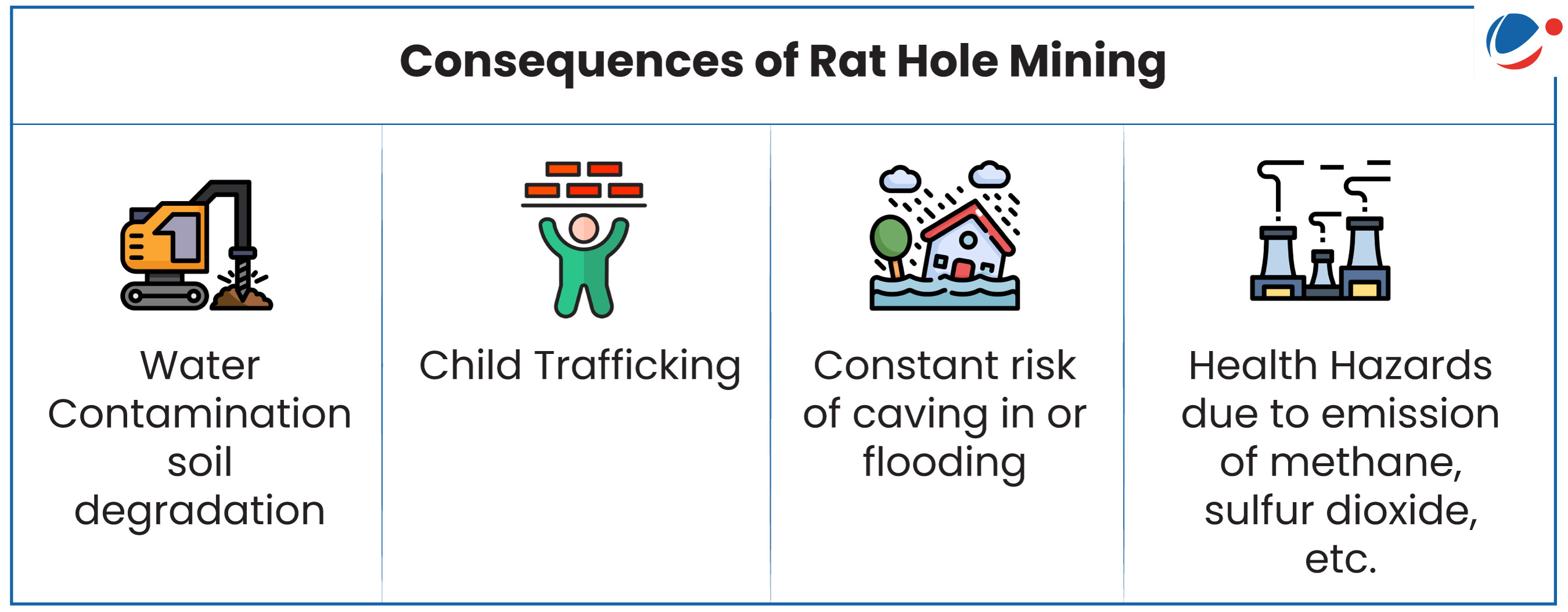Nine workers were trapped in a flooded rat-hole coal mine in Umrangso, Dima Hasao district, Assam that borders Meghalaya
About Rat Hole Mining
- Mining Mechanism: Rat-hole mining involves digging narrow tunnels, usually 3-4 feet high, where workers (often children) enter and extract coal.
- The horizontal tunnels are often termed "rat-holes", as each just about fits one person.
- It is mostly practised in Meghalaya.
- Reasons for prevalence:
- Natural Factors: Thin coal seams make rat-hole mining more economical than open-cast methods.
- Difficult terrain and high costs discourage advanced drilling methods.coal seams in Meghalaya are very thin. This, miners say, makes rat-hole mining more economically viable than opencast mining
- Governance issues: Sixth Schedule protects tribal rights over land under the Constitution.
- Landowners are considered owners of minerals beneath, and it is believed that Coal Mines Nationalisation Act of 1973 does not apply to these mines.
- Natural Factors: Thin coal seams make rat-hole mining more economical than open-cast methods.
- Legal Status: In 2014, National Green Tribunal (NGT) banned rat hole mining in Meghalaya stating it is unscientific and unsafe for workers. The Ban was upheld by Supreme Court.




